#León Bakst
Text

Programme Officiel des Ballets Russes, 1911. Costume de Narcisse, d'après l'aquarelle de León Bakst, 1911. Comœdia Illustré. | src BnF
View on WordPress
#1910s#aquarell#aquarelle#aquatint#ballets russes#comoedia illustre#costume design#danse#Diaghilev Ballets Russes#drawing#illustration#leon bakst#narcisse#programme#tanz#León Bakst#dance#ballet
253 notes
·
View notes
Photo

Portrait of León Bakst, set designer for the Ballets Russes, painted by fellow Jewish artist Amedeo Modigliani.
1 note
·
View note
Text
Union of Russian Artists (1903-1923)
1903 saw the foundation of the Union of Russian Artists, an exhibiting society comprising artists from the St Petersburg based Mir iskusstva (World of Art) and former members of the progressive and democratic group known as the Wanderers (Peredvizhniki). The World of Art movement had become disillusioned, as the Pre-Raphaelites had before them, with the anti-aesthetic nature of modern industrial society, seeking to restore and consolidate neo-romantic Russian artists under one flag - notable members included Alexandre Benois and Léon Bakst. Break away members of the Wanderers included Valentin Serov and Abram Arkhipov.

This Russian charm is modelled as an artist's palette, complete with gem-set paint patches. The quality is superb, as expected with Imperial Russian jewellery, it's crafted in 56z (14 karat) gold with an inscription 9th/21st March 1903 (at the time Russia used the Julian calendar, while the rest of Europe had changed over to the Gregorian, meaning the dates were 13 days out of sync). Was it commissioned to commemorate the founding of the Union of Russian Artists? Quite possibly. We'll never know for sure.
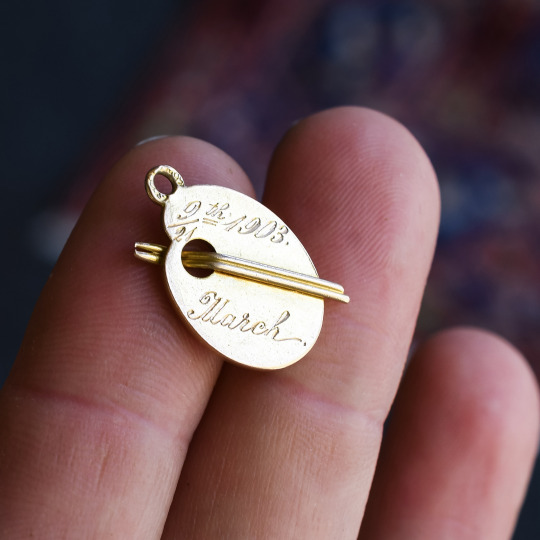
The society's explicit purpose was to "to promote Russian art and to provide members sell their art works", but it also sought to break away from the old forms through self organised exhibitions, not controlled by juries. It ran 18 exhibitions in total from 1903 to 1923, the most successful being the 11th (1913/14) which hosted over 25,000 viewers and made over 70,000 roubles from the sales of works (over $2 million in today's money).
Artists from the two groups embraced widely divergent aesthetic stances ranging from lyrical landscapes by Nikolay Klodt and Arkady Rylov, to the impressionistic paintings of Igor Grabar, symbolist works by Viktor Borisov-Musatov, and experimental works by Mikhail Brubel and V. Serov. The Union of Russian Artists didn't achieve stylistic unity until after the 7th exhibition (1910), when 17 of the St Petersburg artists, led by Benoit, departed citing artistic differences and going on to re-form the World of Art. From then until its dissolution in 1923, the members mainly produced landscapes and genre scenes characterised by a democratic tendency and an interest in the Russian landscape and the distinctly original features of Russian life.

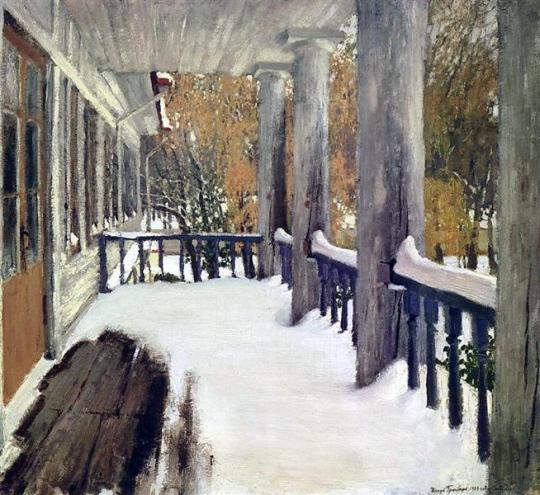
Left: Viktor Borisov-Musatov, Ghosts (1903)
Right: Igor Grabar, September Snow (1903)


Left: Konstantin Yuon, The Night. Tverskoy Boulevard (1909)
Right: Valentin Serov, The Rape of Europa (1910)

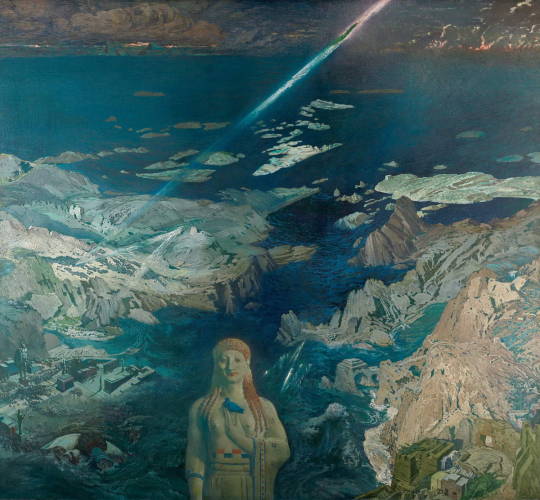
Left: Mikhail Vrubel, Six-winged Seraph (Azrael) (1904)
Right: León Bakst, Terror Antiquus (1908)
11 notes
·
View notes
Photo
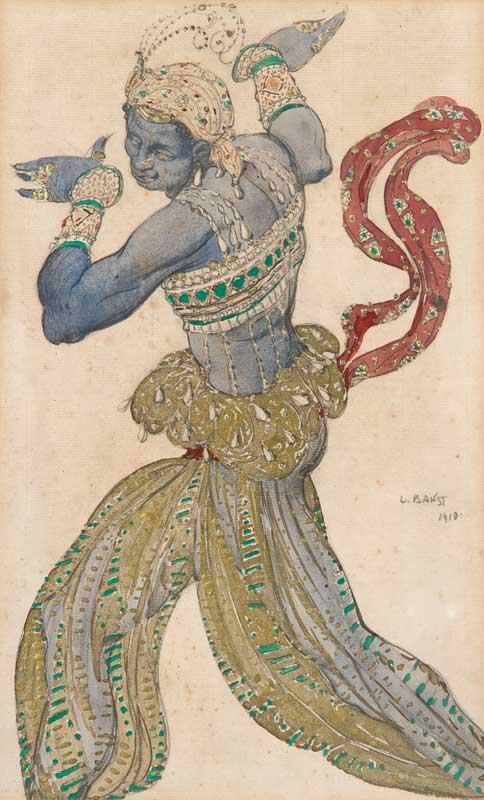
Leon Bakst. Costume design for Scheherazade, 1910.
194 notes
·
View notes
Note
I seen a lot of sleeping beauty ballet productions and it looks like a lot of the costumes are based on the 17th and 18th centuries. Some productions end in the 19th century.
Oh, each company has their favourite production, and with that, their preferred look/mood/period inspiration, since The Sleeping Beauty is a late 19th century ballet inspired by the 17th century version of a much older fairy tale, the time set is not fixed. Which is rather cool, since that gives the costume and art departments of each company the chance to make (and then show us) their own fantasy world.
Here a little tour of my favourite versions (add your own!)
The Mariinsky’s production is inspired by the 17th century and the Sun King. Aurora’s world is pretty much 16th century, and the Prince’s world is 17th century. The production they have nowadays is a revisited version of the 1890 original, from the choreography to the sets, so this is THE version to check if anyone is looking for “the original” one.



The Bolshoi’s production is clearly late 17th-early 18th century inspired, with a touch of exoticism because of course:
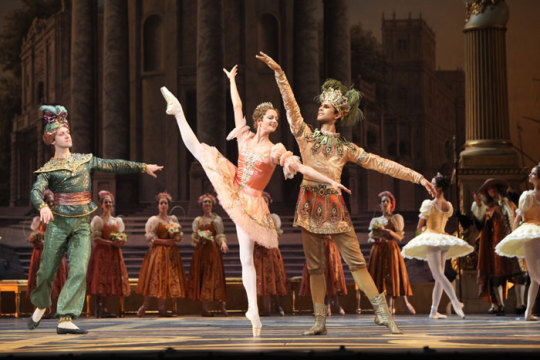
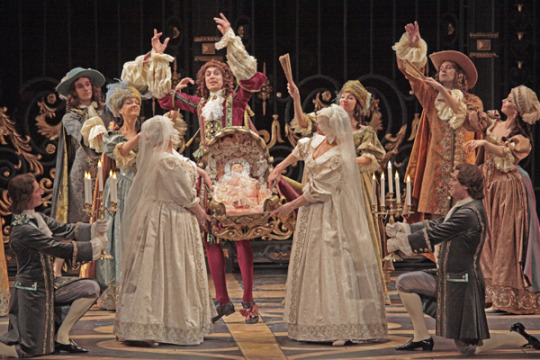
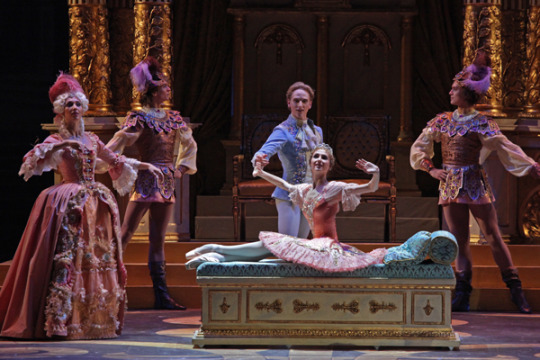
The Mikhailovsky dances Nacho Duato’s version, and their production is full modern fairy tale, very much in the style of Once Upon a Time, and this makes the entire production look very fresh:
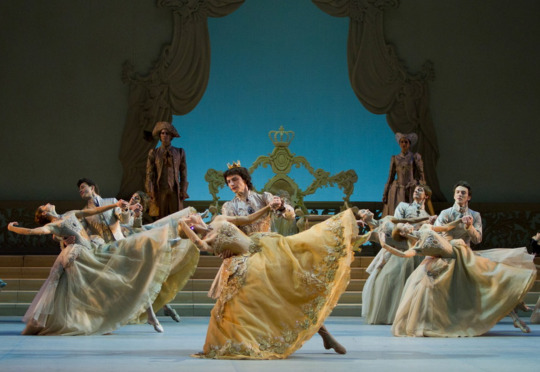


Hong Kong Ballet is one of my favourite companies in the world, since they always manage to make ballet look very cool while remaining quite classical. Their Sleeping Beauty has the best ads, and is also a modern fairy tale world with a touch of 19th century imagination. Also, I LOVE a colourful production:



The Royal Ballet has a 17th century inspired production, and a production like this is is pretty much the norm around the world:


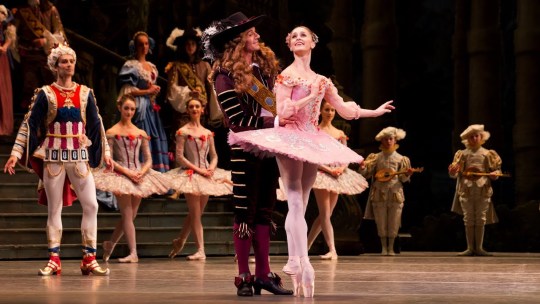
The English National Ballet goes a little bit beyond, showing us their very British version with a production by Kenneth MacMillan that goes with references from the Elizabethan, Stuarts and Georgian times:

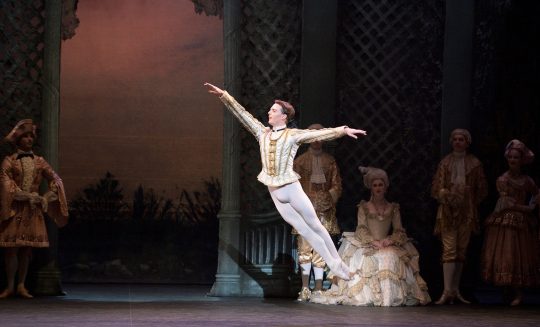

The American Ballet Theater goes very much late 17th-early 18th century, and the costumes are based on the original designs of León Bakst for Les Ballets Russes in 1921.



New York City Ballet’s production is very much 17th century and heavily inspired by theatrical costumes of the time. You can see them close up in this funny video they made.

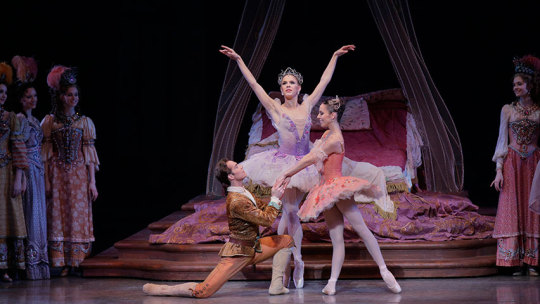
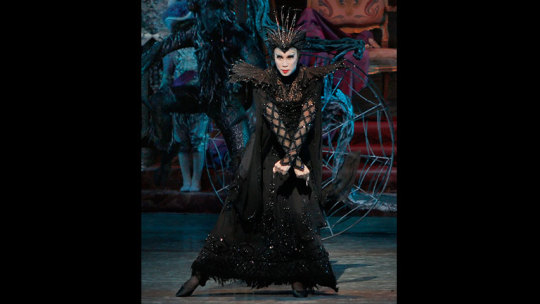
Finally, the National Ballet of Canada has a production that is deeply ornamented, it looks very rich and baroque, even with an inspiration that looks more to the late 18th century, by Rudolf Nureyev:



Thanks for coming to my TED talk.
#Anonymous#ballet#sleeping beauty#18th century inspired#17th century inspired#16th century inspired#19th century inspired#costume#costume design#mariinsky#mariinsky theatre#bolshoi theatre#bolshoi ballet#mariinsky ballet#Mikhailovsky#mikhailovsky theatre#hong kong ballet#american ballet#american ballet theatre#new york city ballet#royal ballet#english national ballet#national ballet of canada#thank you for coming to my TEDtalk
214 notes
·
View notes
Photo

León Bakst, 1910
#leon bakst#ballet costumes#theatre costumes#costume#costumedesign#costumeillustration#illustration#theatre
206 notes
·
View notes
Video
youtube
La siesta del fauno, obra dirigida por Vaslav Nijinsky en 1912, la música es dirigida por Claude Debussy, la escenografía es de León Bakst e interpretada por Serge Diaghilev. Nijinsky estudio en el Teatro María de San Peter Burgos, en el tiempo que los aristócratas se encargaban de la formación de los bailarines y en ocasiones los tomaban como amantes a temprana edad. El hecho que Nijinsky al no tener clara su orientación sexual y ser el director de la siesta del fauno, entrega una relación directa con el personaje del Fauno, que son seres asexuados, siendo una "representación" de él. La obra es basada en el poema de Stephane Mallarme y en los Jarrones de menades, estos últimos entregando un plano a la obra. El Fauno de Nijinsky rompe con paradigmas patriarcales, ya que, es un Fauno asexuado, contradiciendo la imagen de los faunos como seres mitológicos. Rompe con los criterios del ballet, porque, no utiliza clásicas vestimentas como zapatillas y al mantener las piernas flecionadas, siendo contrario a la ilusión óptica de verticalidad. La gestualizacion forma parte fundamental, marcando momentos importantes,
1 note
·
View note
Photo

PAUL POIRET • Aprendiz de Worth • Vestido tubo recto • Reviva al 1800 • estilo columna • Liberación de corset s • Corset hasta las rodillas • uso de sujetador • Influenciado por el ballet Ruso y sobretodo León Bakst • Diseño textil exclusivo • Paul Iribe 1908, georges lepape, Raoul Dufy y Erté • Colores y matices brillantes encontraste a los tonos suaves y florales de la epoca eduardiana • Pantalones harem vestido lámpara turbantes • Las pieles eran un símbolo de orientalismo y aparecieron todo tipo de prendas desde abrigos hasta lencería • Sombreros crochet bordes de piel en abrigos y vestidos largos columna
0 notes
Photo

La manipulación de estilos orientales y griegos hizo de León Bakst uno de los artistas más importantes de su tiempo.
0 notes
Text

Spectacles de gala de Ida Rubinstein, 1911. Le Martyre de Saint Sébastien. Mystère en cinq actes de Gabriele D'Annunzio avec la musique de Claude Debussy. Décors et Costumes de Léon Bakst. Représenté pour la première fois au Théâtre du Châtelet le 22 mai 1911. Comœdia Illustré. | src BnF
view more on wordPress
#ida rubinstein#leon bakst#aquarelle#costume design#aquatint#ballet#Le Martyre de Saint Sébastien#ballets russes#claude debussy#comoedia illustre#1910s#danse#aquarell#danseuse#Diaghilev Ballets Russes#drawing#illustration#León Bakst#martyr#martyrdom#saint sebastian#tanz#tanzerin#tied up#dancer#gabriele dannunzio#gabriele d’annunzio
123 notes
·
View notes
Text
Art F City: This Week’s Must-See Art Events: Constructing Paradise or the Devil Giving Birth to the Patriarchy?
Bea Fremderman
It’s a strange week in post-America, indeed, when the least dystopian art event involves Kim Kardashian ass-workout tapes.
That would be Cindy Hinant’s solo show at MuseumofAmericabooks Monday night. Tuesday, perpetual AFC fav Peter Burr is speaking at the New School, and never has the thought of retreating into one of his installations and imagining life in an underground city been so tempting. But if you’re an artist ready to join the resistance, head to ICP School on Wednesday for a discussion about the role of artists in activism during these dark days. Thursday, every opening feels timely, even Mary Beth Edelson’s 1970s feminist mythologies on view at David Lewis. Down the street, Bea Fremderman waxes apocalyptic at Shoot the Lobster, and the New School has an exhibition about the US/Mexican border that will probably break some hearts.
The weekend brings more timely events, such as David Diao exhibition about his childhood experiences as a refugee (at Postmasters) and a Sunday conference at the New Museum about bodies under duress. Come get advice from lawyers and activists about civil disobedience, the migrant crisis, environmental crises, and more.
M
T
W
T
F
S
S
Mon
MuseumofAmericabooks
18 Herkimer Pl.
Brooklyn, NY
6:00 p.m. - 9:00 p.m.Website
Cindy Hinant: Exercise Videos
Cindy Hinant mines the bowels of pop culture detritus for her series “Exercise Videos”. Namely, Kim Kardashian’s booty-sculpting workout tapes. Each of these—”Ultimate Butt Body Sculpt”, “Butt Blasting Cardio Step”, and “Amazing Abs Body Sculpt”—features Kim K. excitedly talking about her routines while the screen slowly fills with the dominant color from each tape’s packaging.
This reduces the content to color fields, referencing the graphic design of consumerism and “the construction of gendered identities and the aspirational aspects of celebrity culture.”
But has anyone made video art from the sex tape that started it all?
Tue
Austrian Cultural Forum
11 East 52nd Street
New York, NY
6:00 p.m. - 8:00 p.m.Website
Constructing Paradise
Curated by Dieter Buchhart and Mathias Kessler, this exhibition traces the invention of “exoticism” to 19th Century colonialism and reactionary thinking to Europe’s rapid industrialization. The show includes art historical names such as Paul Gauguin alongside contemporary artists who deal with the consequences of colonialism, such as Kara Walker and Mickalene Thomas.
The New School
2 West 13th Street
New York, NY
7:00 p.m. - 9:00 p.m.Website
Peter Burr Artist Talk
We can’t gush enough about how much we love Peter Burr’s work. His immersive video installations and world-building semi-abstract, semi-narrative animations are hypnotic and wholly transporting.
In this talk, part of the New York Comics & Picture-story Symposium, expect talk of sci-fi dystopias and utopias, video games, and new approaches to cinema. This is a must-see for any digital art/moving-image fans.
Wed
Michelson Theater, Tisch School of the Arts
721 Broadway
New York, NY
6:30 p.m.Website
Film Screening: Amos Vogel and Cinema 16
Presented in conjunction with with the exhibition Inventing Downtown:Artist-Run Galleries in New York City, 1952–1965, on view at NYU’s Grey Art Gallery, this screening night pays tribute to the artist-run Cinema 16 society. Founded by Amos Vogel in 1947, Cinema 16 attracted a variety of artists working in avant-garde film making at the midcentury.
Films:
Arne Sucksdorff, A Divided World (10 min.), Oskar Fischinger, Allegretto (3 min.), Kenneth Anger, Fireworks (15 min.), Weegee and Amos Vogel, Weegee’s New York (33 min). Stan Brakhage, Loving (6 min), Robert Breer, A Man and His Dog Out for Air (3 min). Selected and introduced by Scott MacDonald, visiting professor of Art History, Hamilton College.
ICP School
1114 Avenue of the Americas
New York, NY
6:30 p.m. - 8:30 p.m.Website
Visual Resistance: An exploration of the role images play in resistance, protest, and social movements with WRRQ Collective
Quito Ziegler and Kristen P. Lovell, founding members of the queer activist WRRQ Collective, will lead a discussion on the role of visual culture in resistance movements. This is a great opportunity for artists who are wondering how to make themselves useful in this fucked up era. Beyond the theoretical, community groups who need visual support will be there, so you can partner with cause there and then.
Thu
David Lewis
88 Eldridge Street
New York, NY
2:00 p.m. - 6:00 p.m.Website
Mary Beth Edelson: The Devil Giving Birth to the Patriarchy
Mary Beth Edelson’s 1970s collages depict strange, invented feminist mythologies. In today’s political climate, where the women’s movement feels like it’s been set back about 4 decades, the goddess demons holding severed heads bring to mind the Frantz Fanon quote “Either one must remain terrified or become terrifying…”
But the scariest thing about this show is how timely it feels. Where’s a destruction goddess when you need one?
Shoot the Lobster
138 Eldridge Street
New York, NY
6:00 p.m. - 8:00 p.m.Website
Bea Fremderman: How To Do Nothing With Nobody All Alone By Yourself
The doomsday clock is hastening. Never has the end of the world as we know it felt so viscerally within reach. Bea Fremderman’s press release discusses “the apocalypse” as a series of potentials, one that could mean the collapse of capitalism, or a more sinister and violent end brought about by corporate/military/quasi-governmental conspiracy.
We’re not sure what the work here will look like, but the sole image of a Blackberry reimagined as a laughably ineffective hatchet is a compelling one. “Obsolete” technology repurposed as a survival tool? Or illustrating the reality of weaponized communication? In an era where Tweets bring us ever closer to the precipice of disaster, either reading feels urgent.
The New School
2 West 13th Street
New York, NY
6:00 p.m. - 8:00 p.m.Website
State of Exception/Estado de Excepción
This likely-heartbreaking exhibition includes video shot at the US/Mexico border by Richard Barnes alongside found objects accumulated as part of University of Michigan anthropologist Jason De León’s Undocumented Migration project. These include the personal affects (backpacks, clothing, etc…) of migrants during the difficult desert crossing. State of Exception, created by artist/photographer Richard Barnes, artist/curator Amanda Krugliak, and De León, also includes audio interviews with the undocumented people making the journey. Bring the tissues.
Fri
A.I.R. GALLERY
155 Plymouth Street
Brooklyn, NY
7:00 p.m.Website
Bailey Scieszka: The Soft Side of Hardcore
In this performance by Bailey Scieszka, we’ll meet “Old Put the Clown.” I don’t know what that entails exactly, but based on Scieszka’s video work I’ve seen, I’d expect it to be creepy and hilarious at the same time.
Ouchi Gallery
170 Tillary Street
Brooklyn, NY
7:00 p.m. - 10:00 p.m.Website
11th 100 EXHIBITION
Ouchi (Japanese for “home”) is a DUMBO gallery in a domestic-feeling space, which for over 10 years has hosted the 100 exhibition series annually. The show brings together 100 artists from Japan, the United States, and beyond for a group show with works about one topic. Unfortunately, this is the last year. To celebrate, the theme for this 100 show is “home.”
Artists: Naoaki Funayama, KAYANO USHIYAMA, TOMOYA ONOUE, Shigeru K, Satsuki Omura, Ayako Okada, Masumi Yoshida, TAKASHI, Kumi Hirose, Lisa Kogawa, kyo→ko, Fumiko Watanab, YOSHIE HIRANO, Tetsuya Furuhara, Yoshi, sato, TOMO, Natsuki Wakita, Saida Shoko, HIRO, Wazen, MEIKO YAGINO, Narayama Furano, Jun Kawashima, Yuki Hemmi, TOYONOBU, Haru, Masashige Furuya, Ayako Bando, Takahiro KOYAMA, Juri Nakano, Hiro Ito, Mayumi Ikejiri, Takuro Hinokio, Yuri Sakai, Shoran, Masako Masukata, Emi Watanabe, Kazuya, Akiko Noda, Ushimaru Saeki, Fumiaki Asai, kaoru, Yoko Iogawa, nana, Keiko Nabila Yamazaki, Misato Takahashi, Tharanga Goonetilleke, Cherry Yiu, Henry MInata, Daisuke Yamada, Tsukamaiko, Takako Hida, MEGUMI OGAWA, Takayuki Nomura, ChIIkako Rosy, Silvia Aviles, chakory dey, Megumi Chiaya, Asami Tatuda, felicia van ham, felli, grace emery foster, gretchen robinette, Keith dragon mackie, laramie flick, lola jiblazee, nana sampongart, tornado byrne, abigail puritz, alex nowak, alexis men-ra, burnet griffin iv, wimpy af
Sat
Postmasters Gallery
54 Franklin Street
New York, NY
5:30 p.m. - 8:00 p.m.Website
David Diao: HongKong Boyhood
David Diao’s paintings take their cues from modernist abstraction and data visualization—from personal narratives to the political histories that inform them. Namely, Diao’s turbulent childhood spent fleeing the mainland Chinese revolution, to chaotic Hong Kong before ultimately moving to New York City. These paintings can manifest as diagrams of his family’s home (no other photographs or documentation survive) to geopolitical maps.
La MaMa Galleria
47 Great Jones Street
New York, NY
6:00 p.m. - 8:00 p.m.
Closing Reception: Lintel, Mantel, Module, Shelf
Curated by Samuel Draxler, this group show features artists making work that somehow subverts mass-produced domestic environments. We hope to make it to the closing, as GaHee Park is one of favorite new painters. However she subverts mass-produced space, we expect it to include weird, weird nudity.
Lauren Bakst & Yuri Masnyj, Elliott Jerome Brown Jr., Mary-Ann Monforton, GaHee Park, Isaac Pool
Meyohas
181 E 90th St.
New York, NY
7:00 p.m. - 10:00 p.m.Website
Jonathan Mildenberg: THE TRANSITION OF POWER
The phrase THE TRANSITION OF POWER might bring to mind the recent, disastrous transfer of the Oval Office, but this exhibition is informed by an older socio-political tragedy (albeit one that undoubtedly shaped our troubled electoral maps). Jonathan Mildenberg’s sculptural works are inspired by “red lining”, the early-to-mid 20th Century policy of denying mortgages to ethnically diverse, high-density city neighborhoods. The practice essentially forced prospective homeowners to move to segregated suburbs, far more than choice on the “free market”. Here, Mildenberg reflects on the bank and the garden as two aesthetic environments related to the spatial politics of American housing injustice. Should be an interesting show.
Sun
New Museum
235 Bowery
New York, NY
11:30 a.m. - 6:00 p.m.Website
Body Politic: From Rights to Resistance
A.K. Burns, the artist-in-residence through the Department of Education and Public Engagement’s Spring R&D Season, has organized a mini conference to prepare us for the battles ahead. Lawyers, activists, and organizers will discuss “the body under duress.” This topic includes environmental and immigration injustice as well as modes of civil disobedience and resistance.
Participants include representatives from Center for Constitutional Rights, the Center for Reproductive Rights, the New York Civil Liberties Union, the New York Environmental Law and Justice Project, and the Sylvia Rivera Law Project.
Session One 11:30 AM–2 PM
Civil Disobedience, Protest, and Healthcare
Session Two: 3–6:00 PM
Policing, Prisons, Immigration, and Environmental Contamination
RSVP to attend. We highly recommend this.
from Art F City http://ift.tt/2kGGLv9
via IFTTT
0 notes
Text
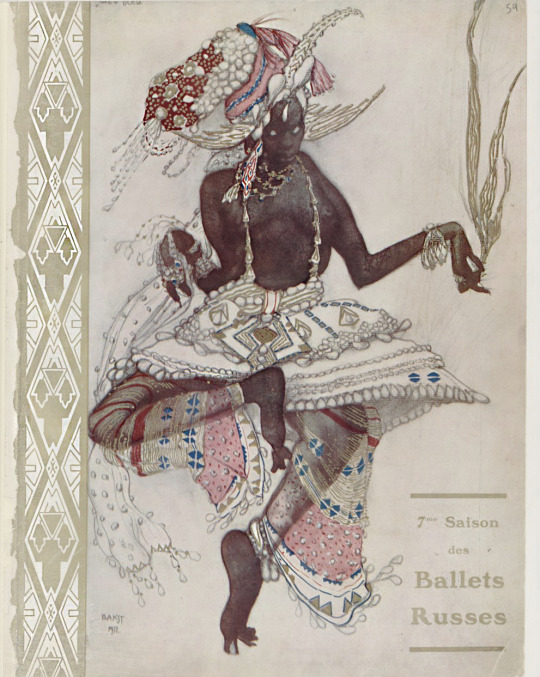
7ème Saison des Ballets Russes, 1912. Costume d'après l'aquarelle de León Bakst, 1912. Comœdia Illustré. | src BnF
View on WordPress
#1910s#aquarell#aquarelle#aquatint#ballets russes#comoedia illustre#costume design#dance costume#Diaghilev Ballets Russes#drawing#exoticism#illustration#León Bakst#leon bakst
101 notes
·
View notes
Text

7ème Saison des Ballets Russes, 1912. "Le Dieu Bleu", costume d'après l'aquarelle de León Bakst, 1912. Comœdia Illustré. | src BnF
View on WordPress
#1910s#aquarell#aquarelle#aquatint#ballet dancer#ballets russes#blue god#comoedia illustre#costume design#crown#danse#Diaghilev Ballets Russes#drawing#exoticism#headgear#illustration#le dieu bleu#León Bakst#leon bakst#nijinsky#tanz#tanzer#vaslav nijinski#vaslav nijinsky
106 notes
·
View notes